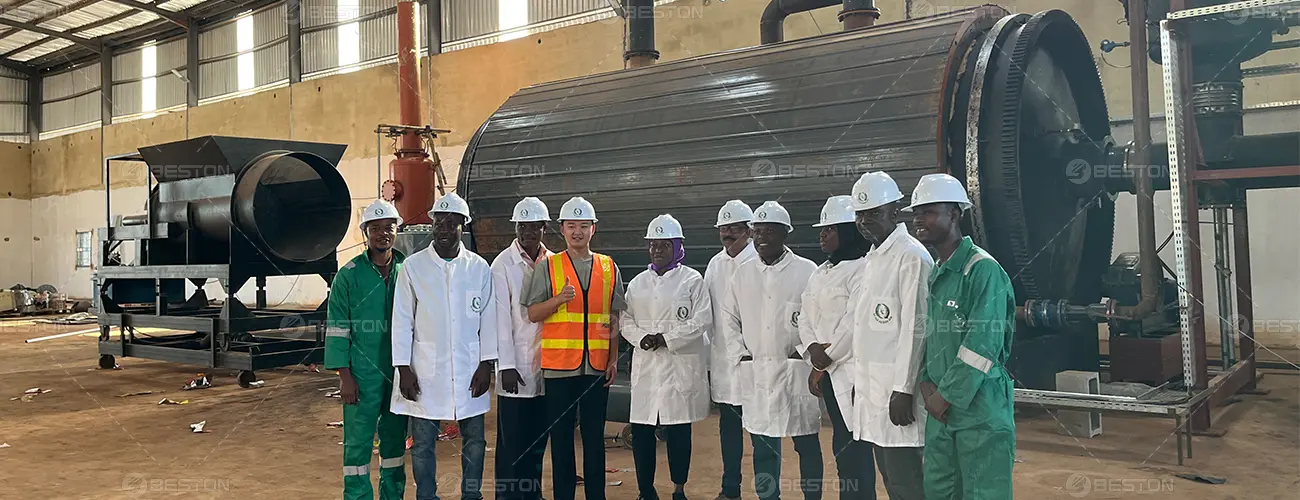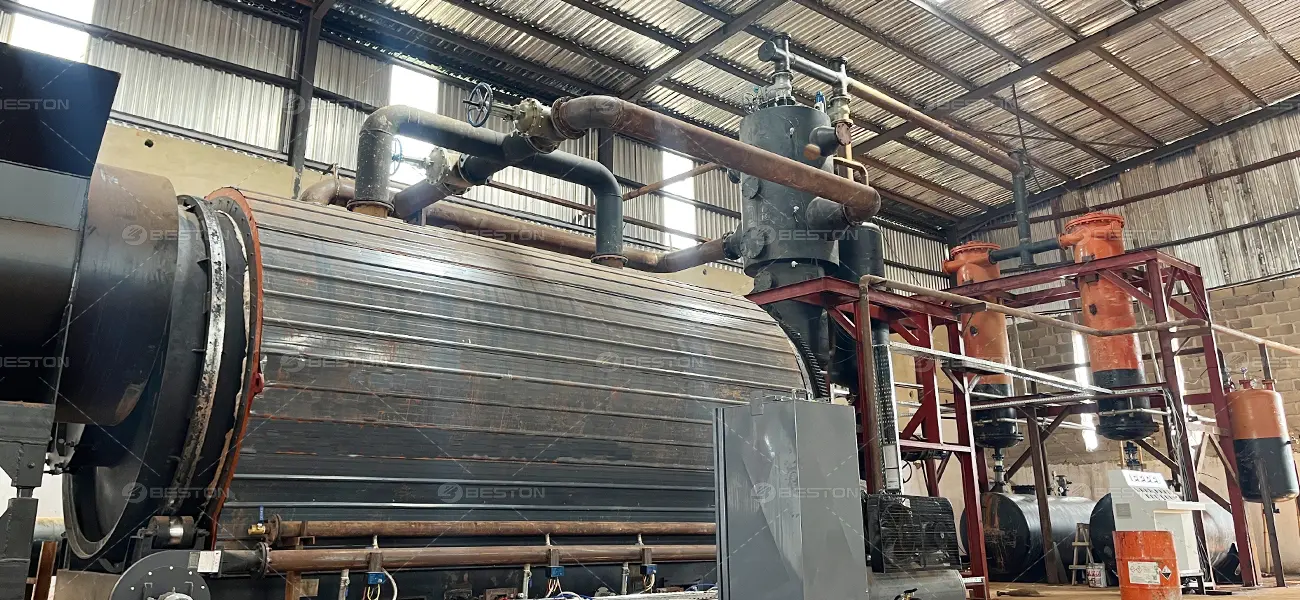
1. Challenges Faced
In Nigeria, a leading waste recycling company faces a growing challenge with end-of-life tyres. It needs to process at least 4,000 tonnes every year. These non-biodegradable tyres occupy land for long periods. They also create serious environmental risks, such as fire hazards and breeding grounds for disease vectors. Traditional methods like landfilling and open burning are inefficient and harmful to the environment. The company therefore needs a solution that can generate valuable outputs while ensuring full environmental compliance.
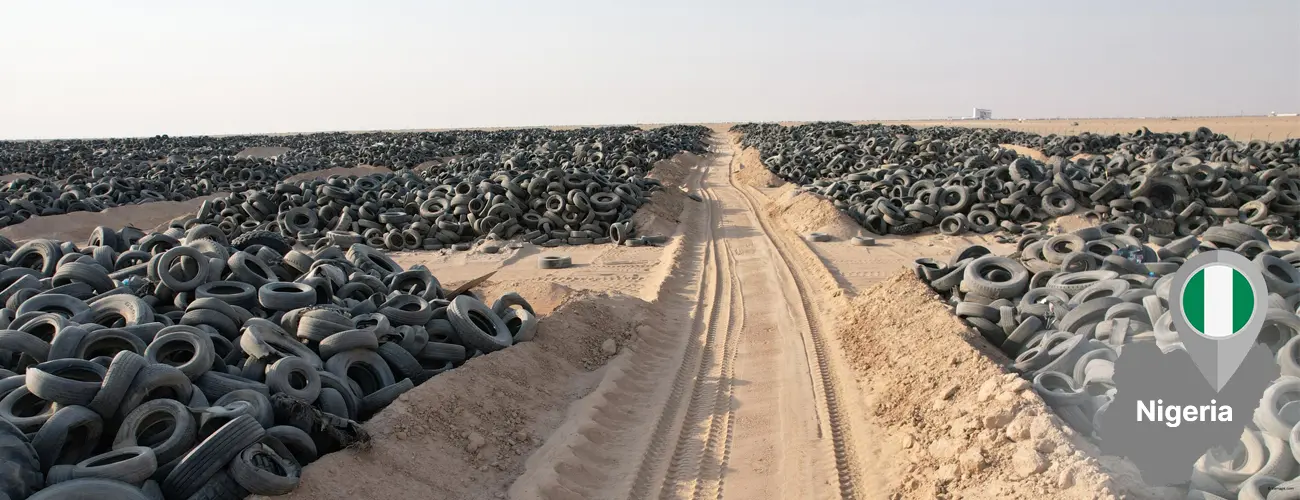
2. Goals for Change
After thorough research, the Nigerian client chose to adopt pyrolysis technology to expand its recycling program. The initial goal is to launch a waste tyre pyrolysis project to gain operational experience, build a skilled technical team, and validate both the return on investment and the resource recovery potential of pyrolysis.
3. Actions and Solutions
Through collaboration with Beston Group, the company installed an advanced tyre pyrolysis plant. The chosen model, BLJ-16, is a batch-type system capable of processing 10–12 tonnes of waste tyres per batch. Its key features include:
- Hydraulic Feeding System – Enables safe and efficient tyre loading.
- Dual-System Configuration – Improves material flexibility (waste tyres and plastics) and enhances processing efficiency.
- Emission Control Units – Equipped with essential devices to meet local environmental standards.
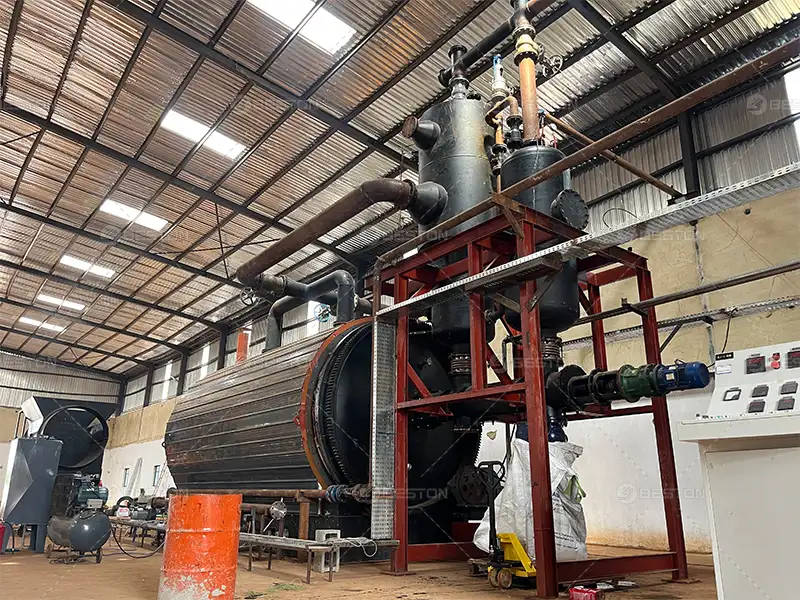
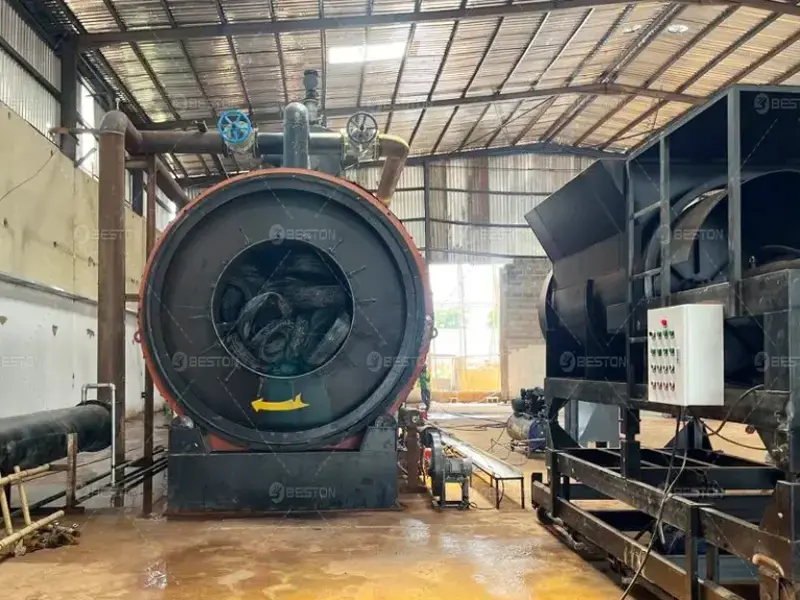
4. Project Achievements
Since installation, the tyre pyrolysis plant has been running smoothly and delivering stable results:
- Annual Processing Capacity – Handles up to 4,000 tonnes of waste tyres.
- Product Output – Generates valuable by-products, including pyrolysis oil with an oil yield of around 40%, and carbon black accounting for about 30% of the feedstock weight.
